The Double; The Double
One of Magritte's favorite mysteries is the double (One of Magritte's favorite mysteries is the double). Magritte used duplication frequently- some times using an exact double as in his 1926 Foolhardy or other times showing the double image from a different angle.
Magritte was surely familiar with Edgar Allan Poe's "William Wilson" (1839). In Poe's story William Wilson, a man of "a noble descent" discovers he has an identical double who has the same name, who has roughly the same appearance, and who was even born on exactly the same date — January 19 (which was also Poe's birthday). Wilson's double follows him and copies his manner of speech and his actions. Now when Wilson sees his double, his double's face is always covered.
Finally at a ball in Rome, William drags his "unresisting" double — who was wearing identical clothes — into an antechamber, and stabs him fatally. After William does this, a large mirror suddenly seems to appear. Reflected at him, he sees "mine own image, but with features all pale and dabbled in blood."
Poe is not the first writer to use the Doppelgänger. Doppelgängers, as dark doubles of individual identities, appear in a variety of fictional works including Fyodor Dostoyevsky's The Double. The word is also used to describe the sensation of having glimpsed oneself in peripheral vision, in a position where there is no chance that it could have been a reflection.
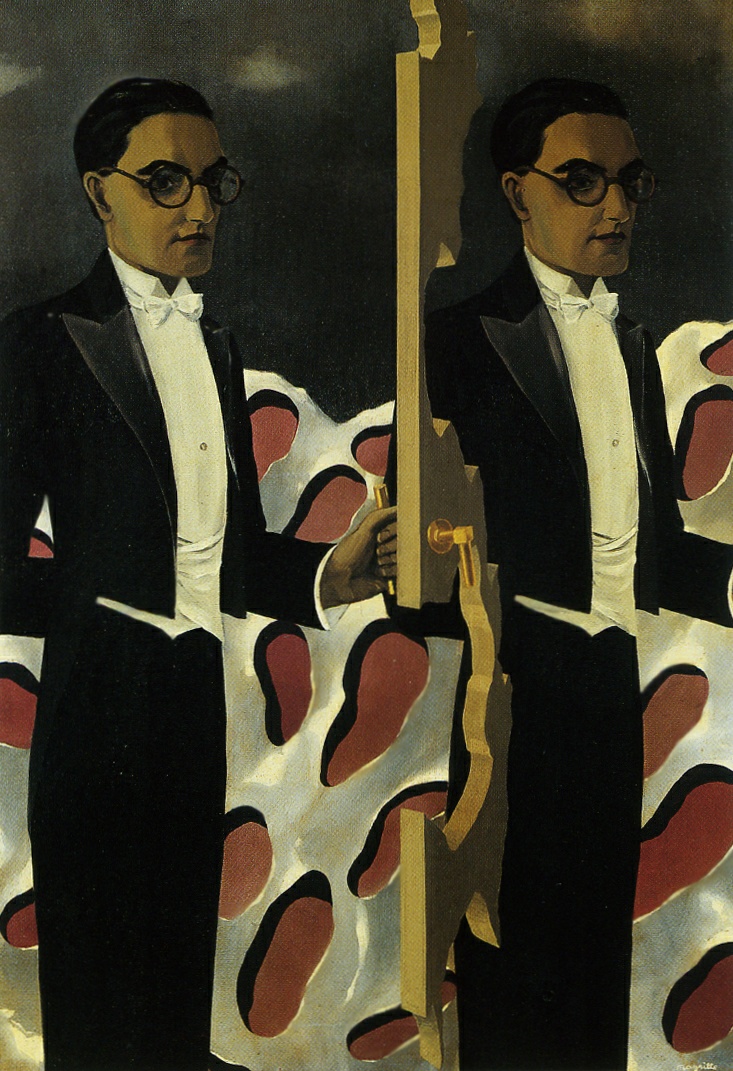
Rene Magritte: Portrait of Paul Nouge- 1927
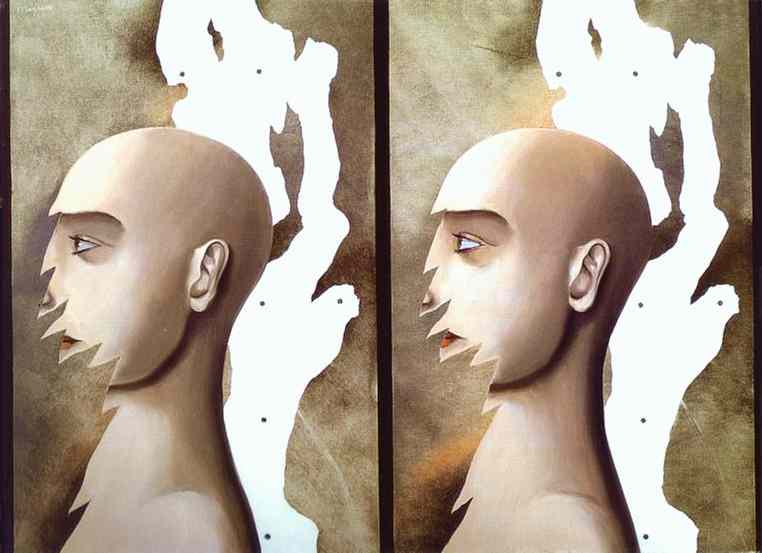
Rene Magritte: An End to Contemplation- 1927
Magritte use the double image as an exact copy and also to show the duplicity of a person as in his 1935 Portrait of Georgette. The importance of the mirror in Magritte's work is likewise significant. The fact that Poe's character William Wison's double had his face covered could explain Magrittes penchant for hiding the face behind a variety of objects:
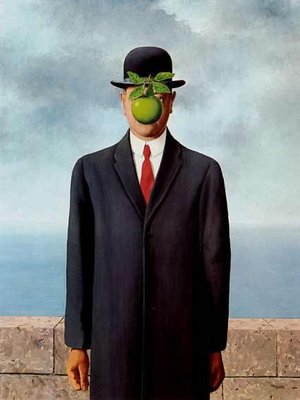
Rene Magritte: The Son of Man- 1964
Some writer's [see La Belle Captive: Alain Robbe-Grillet and René Magritte (1995)] have attributed Magritte's "painting within a painting on an easel images" found in The Human Condition/The Fair Captive series to be double images perhaps related to Poe's William Wilson. After all, Poe was a master of the text within a text.
Magritte also borrowed from illustrations found in books. His "Return of the Flame" is copied from the cover of a Fantomas magazine and his "Panic in the Middle Ages" is a copy of "The Death of Pissaro" an illustration in an 1878 Jules Verne book. Surely Magritte was familiar from this illustration found in William Wilson:
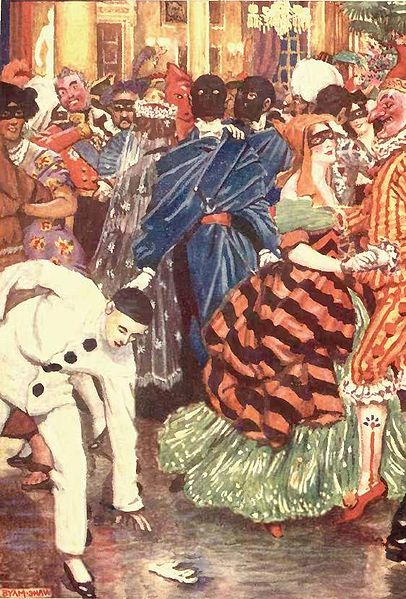
Byam Shaw's illustration for Poe's William Wilson in "Selected Tales of Mystery" (London : Sidgwick & Jackson, 1909) on the frontispiece with caption "A masquerade in the palazzo of the Neapolitan Duke Di Broglio."
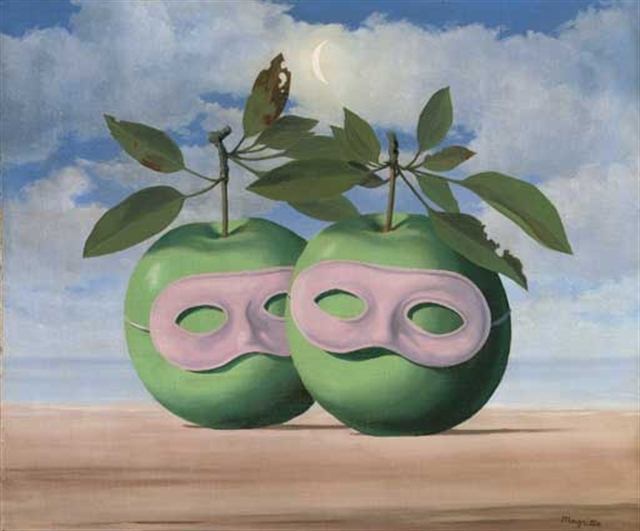
Rene Magritte: The Married Priest
Are these double images or has the priest been invited to the ball? As Magritte would say, "Sometimes there are only questions and no answers...for the mystery is the important thing."